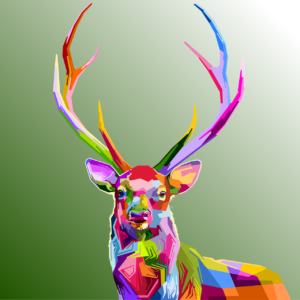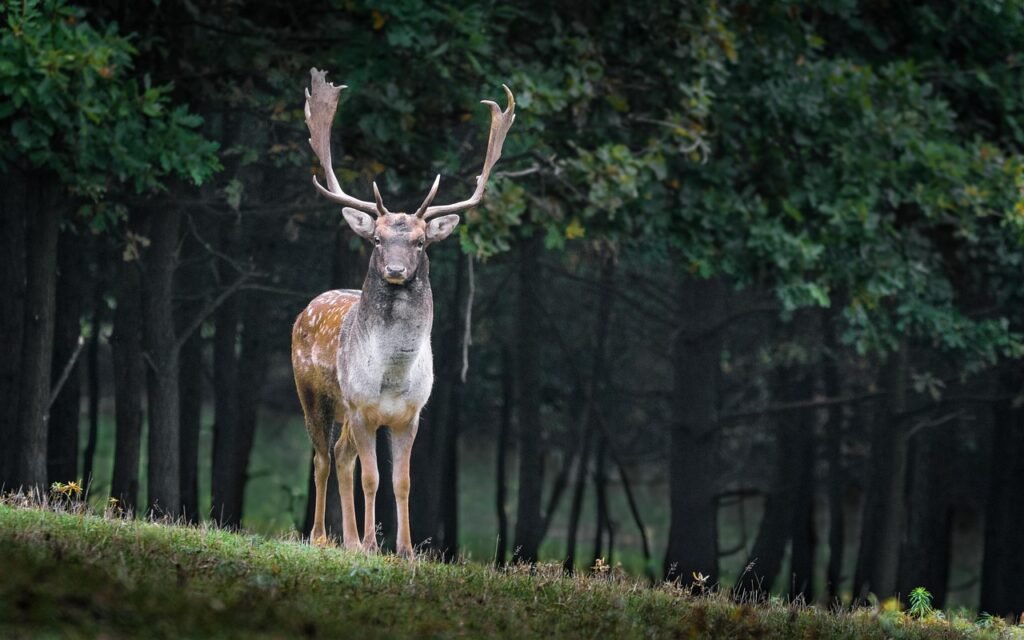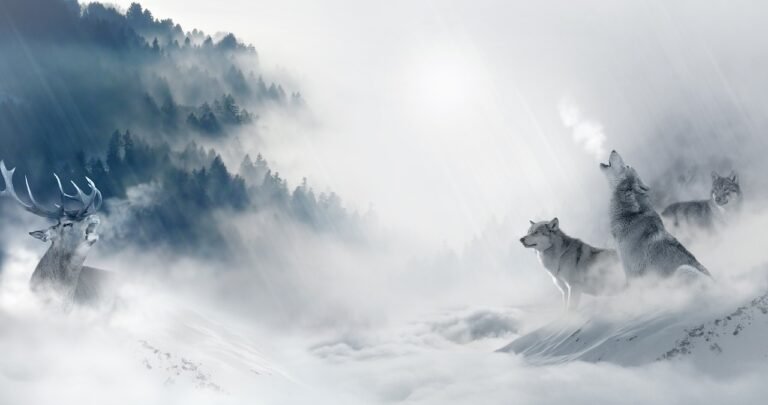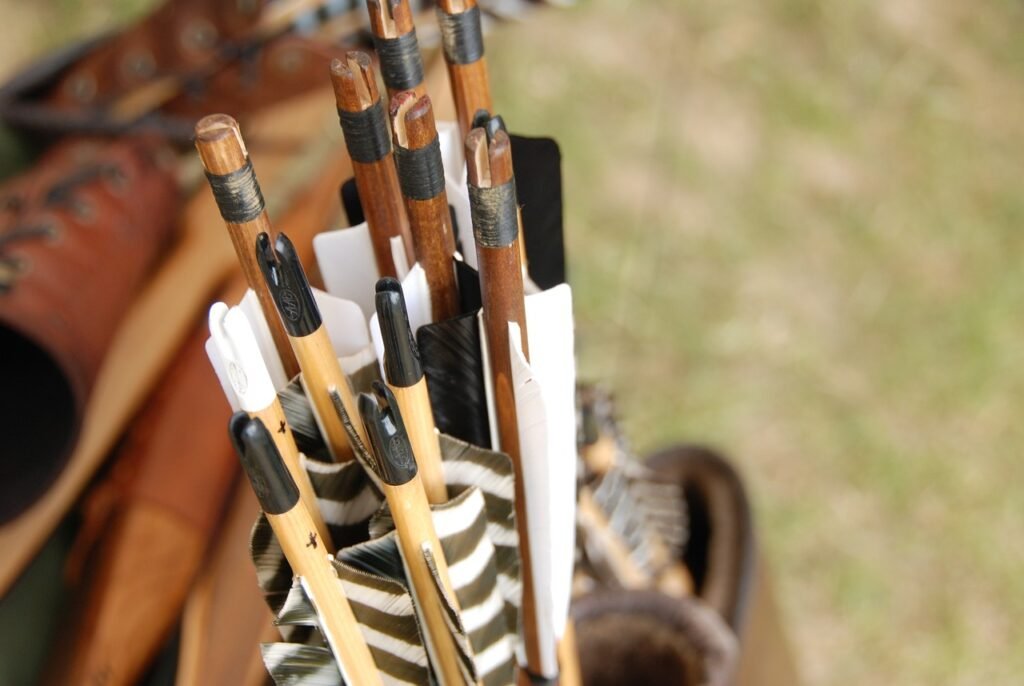If you like being in the outdoors Deer Humting maybe for you.
Hunting for deer typically involves finding a good location to set up a hunting blind or stand, and then waiting for deer to come into range. Here are some tips for hunting deer:
- Scout the area before hunting season to identify potential deer trails, food sources, and bedding areas.
- Set up hunting stands or blinds near food sources, such as acorns, apples, or other plants that deer are known to feed on.
- Use scents or lures to attract deer to your hunting area.
- Use camouflage clothing and stay downwind of the deer to avoid being detected.
- Be patient and wait for the right shot opportunity.
As for the hardest deer to find, it can vary depending on the region and the specific species of deer. In general, mature bucks (male deer) are often more elusive than does (female deer) because they have learned to avoid hunters and predators. Mule deer, which are found in the western United States, are known for their wariness and can be difficult to hunt. Whitetail deer, which are found in the eastern and central United States, are also known to be elusive and can be challenging to hunt. It’s worth noting that hunting regulations, seasons, and limits vary by state and region, so it’s important to check with local authorities before hunting.

Deer hunting can be rewarding
Deer hunting can be a rewarding experience for a number of reasons. Some people find satisfaction in the challenge of tracking and stalking deer, while others enjoy the peacefulness and solitude of being in the wilderness. Here are a few other ways in which deer hunting can be rewarding:
Spending time outdoors: Deer hunting can be a great way to spend time in nature, away from the hustle and bustle of everyday life.
Connecting with tradition: For some, hunting is an important tradition that has been passed down through generations. It can be a way to connect with family, friends, and one’s cultural heritage.
Providing food: Many hunters take pride in providing food for their families and communities through hunting.
Conservation: Responsible hunting is an important aspect of conservation. Hunters are typically the ones who support conservation efforts and help to preserve wildlife habitat.
Personal accomplishment: Hunting can be a physically and mentally challenging endeavor. Successfully stalking and taking a deer can be a great sense of personal accomplishment.
Connection to one’s environment: Hunting can give individuals a better understanding and connection to the environment, by learning about the life of animals, and how they interact with their surroundings.
It’s worth noting that hunting is not for everyone and some may find the activity morally or ethically questionable. It’s important to consider one’s personal beliefs and values before taking part in the activity.

What are the different types of Deer ?.
There are many different types of deer found around the world, and different species may be hunted in different regions. Here are a few examples of the most commonly hunted deer species in North America:
White-tailed deer: This is one of the most common and widely distributed deer species in North America. They are found in a wide range of habitats, from forests to grasslands, and are known for their distinctive white tail.
Mule deer: These deer are found in the western United States and are known for their large ears and black-tipped tails. They are found in a variety of habitats, including mountains and deserts.
Black-tailed deer: These deer are closely related to mule deer and are also found in the western United States. They are known for their black-tipped tails and are found in a variety of habitats, including forests and coastal areas.
Moose: Moose are the largest members of the deer family, and are found in the northern regions of North America. They are known for their impressive antlers and are typically hunted in the fall.
Elk: Elk are a large member of the deer family found in North America, they have large antlers and are known for their distinctive bugling calls during the fall mating season. They are found in a variety of habitats, including mountains and forests.
Caribou: Caribou are a species of deer found in the Arctic and Subarctic regions of North America. They are known for their large antlers and are migratory, moving seasonally with their food sources.
It’s worth noting that hunting regulations, seasons, and limits vary by state and region, so it’s important to check with local authorities before hunting.

What are the different ways to hunt for Deer?
There are several different methods for hunting deer, each with its own set of challenges and advantages. Here are a few examples of the most common methods:
Still hunting: This method involves slowly and quietly moving through the woods, trying to spot and stalk deer. This method requires a great deal of patience, stealth, and knowledge of deer behavior and habits.
Spot and stalk hunting: This method involves using binoculars or a spotting scope to locate deer from a distance, and then stalking them to get within range. This method requires a great deal of stealth and physical stamina.
Driven hunting: This method involves driving deer towards a group of waiting hunters, typically used in group hunting.
Stand hunting: This method involves setting up a hunting stand or blind in a strategic location, such as near a food source or travel corridor, and waiting for deer to come within range. This method requires a good understanding of deer behavior and the ability to remain still and quiet for long periods of time.
Baiting: This method involves placing a pile of food, such as corn, in a specific location to attract deer to a particular area. This method requires a good understanding of deer behavior and the ability to remain still and quiet for long periods of time.
Calling: This method involves using calls, such as grunt calls or rattling antlers, to mimic the sounds of other deer and attract them to a specific location. This method requires a good understanding of deer behavior and the ability to remain still and quiet for long periods of time.
It’s worth noting that hunting regulations, seasons, and limits vary by state and region, so it’s important to check with local authorities before hunting. Additionally, it’s important to follow the ethical principles of hunting and to respect the animals and their environment.

Bow Hunting
Hunting for deer with a bow and arrow can be a challenging and rewarding experience. Here are some tips for successfully hunting deer with a bow:
Practice your shooting: Before going hunting, make sure you have practiced your shooting and are comfortable with your bow and arrow. Make sure you understand how your bow works, and how to properly aim and shoot the arrow.
Get the right gear: Make sure you have the right gear such as a bow, arrows, broadheads, quiver, release aid, and other accessories. It’s also important to wear appropriate clothing, such as camouflage, and to use scent-eliminating products.
Scout the area: Scout the area you plan to hunt beforehand to learn about the deer’s behavior and habits. Look for signs of deer activity such as tracks, droppings, and rubs, and identify potential food sources and bedding areas.
Choose the right location: Set up your hunting stand or blind in a location that provides good visibility and is likely to be used by deer. Make sure you are downwind of the deer so they won’t detect your scent.
Be patient: Hunting with a bow requires a great deal of patience. Wait for the right shot opportunity, and make sure you are in the right position to take a shot.
Take the right shot: When taking a shot, aim for the vitals, such as the heart and lungs, to ensure a clean and humane kill.
Follow-up: After shooting a deer, it’s important to follow up as soon as possible to track and recover the animal. This will help minimize the suffering of the animal and ensure a successful harvest.
Know the laws and regulations: Hunting laws and regulations vary by state, so make sure you are familiar with the laws and regulations in your area.
It’s worth noting that hunting with a bow and arrow requires a great deal of skill, patience, and knowledge of deer behavior and habits. It is also important to be aware of safety guidelines and to follow the ethical principles of hunting.

How did the American Indians hunt for the Deer?.
There are several different methods for hunting deer, each with its own set of challenges and advantages. Here are a few examples of the most common methods:
Still hunting: This method involves slowly and quietly moving through the woods, trying to spot and stalk deer. This method requires a great deal of patience, stealth, and knowledge of deer behavior and habits.
Spot and stalk hunting: This method involves using binoculars or a spotting scope to locate deer from a distance, and then stalking them to get within range. This method requires a great deal of stealth and physical stamina.
Driven hunting: This method involves driving deer towards a group of waiting hunters, typically used in group hunting.
Stand hunting: This method involves setting up a hunting stand or blind in a strategic location, such as near a food source or travel corridor, and waiting for deer to come within range. This method requires a good understanding of deer behavior and the ability to remain still and quiet for long periods of time.
Baiting: This method involves placing a pile of food, such as corn, in a specific location to attract deer to a particular area. This method requires a good understanding of deer behavior and the ability to remain still and quiet for long periods of time.
Calling: This method involves using calls, such as grunt calls or rattling antlers, to mimic the sounds of other deer and attract them to a specific location. This method requires a good understanding of deer behavior and the ability to remain still and quiet for long periods of time.
It’s worth noting that hunting regulations, seasons, and limits vary by state and region, so it’s important to check with local authorities before hunting. Additionally, it’s important to follow the ethical principles of hunting and to respect the animals and their environment.
Also it is important to respect the native Indians and their culture and their land and ask for any permissions.
In conclusion hunting can be fun and it doesn’t have ti be always with a gun or Bow but can also be with a camera too.


